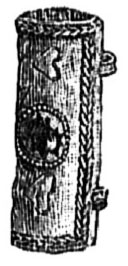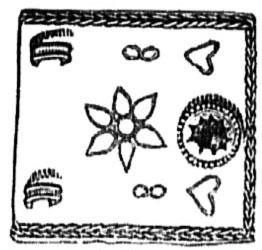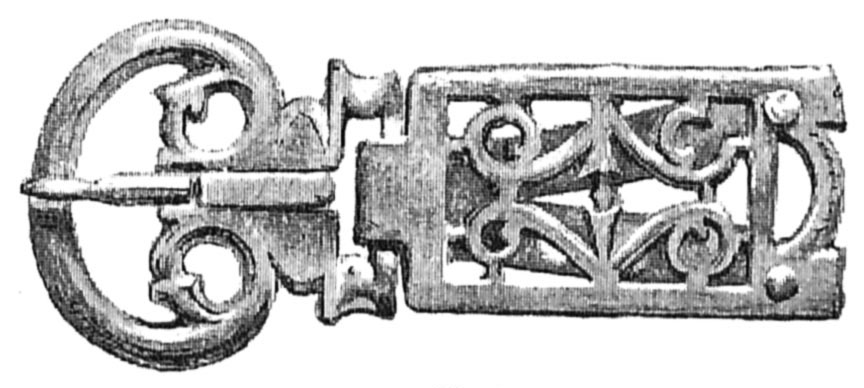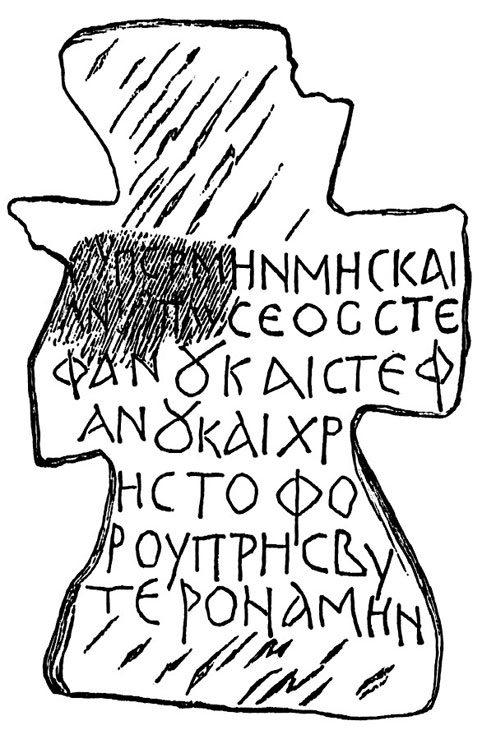 |
 |
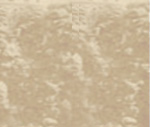 |
|
||
| main :: biography :: texts :: manuscripts :: photographs :: drawings :: squeezes :: publications :: about | ||
|
Year 1890 ...
IN CHERSONESOS
In the year 1890, Chersonesian excavations were made: 1) between the monastery garden and the church under construction, along the alley leading to it; 2) in front of and in the church with mosaic floors that was uncovered in 1889; 3) on a hill near west city wall; 4) on the shore, between the sea and the monastery garden; 5) on the southern hills closest to the city wall, where necropolis was located; 6) in the lands of lieutenant colonel's wife Shverin (near Streletskaya bay), V.F.Zagorodyanskiy (on the artificial island in Kazach'ya bay), and A.P.Panchenko (between the upper reaches of Kazach'ya bay and the sea shore opposite to it). In view to widen the area in front of the church that is being built in Chersonesos, layout was started, at the expenses of the local monastery, for the situation located from the left side of the alley, between the main monastery building and new church. As important finds have been uncovered in two places of this situation, namely: marble, of <high> artistic quality, relief image of standing on one wide foot lion with open jaws (s<ee> attach<ed> fig<ure> No 16, 1/6 of act<ual> siz<e>) at the west wall, and five fragments of stone vault with the 12th century Byzantine inscription (publ<ished> by V.V.Latyshev in Mater<ialy> po arkheologii Rossii ['Materials for the archaeology of Russia'], vol. 9, p<ages> 37-38) at the east wall, the excavation director Mr Kostsyushko-Valyuzhinich started there closest investigation of both places; he uncovered two big, square-shaped cisterns, in the first <place>, and remains of a small church built on 4 ancient cemented cisterns, of which 3 have square and 1 circular shape, closer to the church under construction, 20 sazh<enes> from its western doors and in 11 sazh<enes> from the alley.
This church has been found in completely destroyed form: no trace is left from the altar apse; mosaic floor appears to be in smallest fragments, and only socles and a damaged base remain from four columns. The cistern was pear-shaped in section and had 8 arch<ines> in deep and 3 arch<ines> in diameter at the top; the church wall above it was built on the vault; the cistern was turned to sepulchre. Other cisterns were blocked up with stone and earth and cut by church walls. The mosaic is distinguished by its unusual for the Chersonesian churches hardness. The area where new church is being built nowadays was, as the excavations discovered, totally covered with churches, remains of which survived in two places only, to the south, and moreover in the most miserable form. All the location that was dug up at the monastery's means forms an area about 700 square sazh<enes>. Main finds from this location, apart from the above mentioned marble image of lion and fragments of stone vault with Byzantine inscription, are as follows: fragments of marble slabs with Greek inscriptions (s<ee> Mater<ialy> po arkheol<ogii Rossii> ['Materials for the archaeology of Russia'], vol. 9, p<age> 2, 32, 34), bottom of limestone gravestone with image of horseman, lower part of marble slab with image of peacock and a bird pecking grapes, fragment of big clay vessel with image of satyr's head, fine terracotta head of a woman with highly raised coiffure, fragment of fine terracotta head of Bacchus, part of clay amphora with a clay ring hanged to its handle, gold pendant shaped as cylindrical tube with two eyes, decorated with ruby and images of a star, hearts, etc. (s<ee> attach<ed> fig<ures> no. 17a and 17b , act<ual> s<ize>, on p<age> 32; fig<ure> 17b shows unfolded surface of the tube) bronze lamp, iron: ploughshare, horse chain, drill, chisel and padlock; besides that, up to 500 fragments of mosaic, half of bronze reliquary cross with image of Mother of God with six holy men and six holy women in front of her, and complete bronze reliquary cross with coarse images on two sides.
In the big church with mosaic floors that was uncovered in 1889, and outside it, on the east side, all the ground has been taken out down to bedrock for the purpose of seeing all marble columns and capitals which remained after the big church was destroyed and were put into foundations, but no discoveries are made in removed ground. Water pipe of the upper city, looking like a channel covered by stones slabs, was uncovered when excavating in front of the church (as in 1889, in excavations on the sea shore). At the same place, there were remains of a small church (similar to that uncovered in 1889 to the south from the big church), <constructed> above stone vaulting, under which there was a sepulchre, divided into four sections, 5 <arch>ines long and 2 ¾ <arch>ines wide. A small tomb was discovered near the small church, to the S<outh> of it; pair of big bronze earrings, of low artistic quality, with pendants of gilded silver, were found in it. No upper city walls are discovered opposite to the altar apse of the big church, in the area of about 29 sq<uare> sazh<enes>, so this area might be a yard; circular cistern and low walls of big flagstones located there belonged to the ancient city. In the extreme, to S<outh>, room there is a big quadrangular cistern 5 ½ arch<ines> long and 4 arch<ines> 14 versh<oks> wide, which was blocked up with ground and stone, like others. Among the finds from this situation, broken off a marble statue and greatly damaged head of Dionysus (see Materialy po arkheologii Rossii ['Materials for the archaeology of Russia'], vol. 7, p<age> 20), which drawing and dimensions are absolutely the same as clay model uncovered in the first year of excavations in a terracotta workshop, eleven glass bracelets, silver finger-ring of low artistic quality, five clay censers, up to 286 fragments of glass mosaic, of blue, light green, and yellow <colours>, marble column of excellent preservation, two marble bases, fragment of marble slab with a cross composed of six rosettes and located in double circle in its centre, all are worthy of notice. Remains of a big church, with 6 bases that survived in situ, on which columns had been fixed, and with several slabs of a marble screen in chancel, were uncovered on a hill at the west city wall, 3 q<uarters> far from the above-mentioned church with mosaic floor; other remains of columns, capitals, and slabs found there were fragmented. One of the tombs that turn out to be there contained female burial with two silver spirals, covered with plated gold, polished oval <pieces of> rock crystal, and three beads: one of rock crystal and two of glass. 4 fragments of image of pigeon of low artistic quality were uncovered amidst marble slivers. Fragments of columns and slabs were put in walls of the church and proved that it suffered the same fate as all Chersonesian churches, that is to say, it was reconstructed later on, but not in its original form. In the year under report, excavations were organized inside this church only; none of its walls was trenched round from outside, and heaps of stone and earth on its southern side allows one to think that there were even bigger building. Besides the artifacts mentioned above, 3 fragments of marble slabs with insignificant traces of Latin inscription, fragment of limestone slab also having a part of greatly damaged Latin inscription, and multitude of mosaic fragments of white, grey, and pink marble were uncovered in this church. Excavations on the shore, between the sea and the monastery garden, discovered an area with ancient layers, without traces of any building, and, above it, a street of Byzantine Chersonesos and small destroyed church with three tombs. The church is 9 f<eet> 2 inches long, 10 f<eet> 1 inch wide; inner diameter of the apse is 6 <feet>; the floor is composed of stone slabs. Three marble capitals, marble column 4 arch<ines> long, and fragments of a cornice were excavated in it. There is a great number of finds, of pre-Christian period only, discovered in the lower stratum; most important are: multitude of amphora handles with names of astynomoi, monograms of manufacturers and different images, amphora necks and shatters of bricks, also with astynomoi names, fragments of terracotta statuettes, shatters of clay models of statuettes, handles of clay slip vessels (including three ones with relief image of head of Silen), clay lamps, bottoms of clay slipped vessels with scratched on names and initials, perhaps of pottery owners, clay sinkers shaped as truncated pyramids, with carved images and letters, and fragments of painted vessels.
When excavating along the road leading from Sevastopol to the monastery, on a slope, it was a success to discover a whole range of tombs that were carved in bedrock, adjoining closely each other, about 1 sazh<enes> long, 1 arch<ines> wide, and down to 30 versh<oks> deep, covered mainly with 2 long, thick slabs. No artifacts were found with the dead in 5 of 24 tombs uncovered there; clay and glass vessels, clay lamps, various bronze wares, namely bracelets, buckles (see attach<ed> fig<ure> no. 18, act<ual> siz<e>) , strigil, fragments of vessels, fragments of casket and composite belt, candlestick, needle, brooch, key, ear cleaner, mirror, primitive image of human figure (bronze amulet), toys (in the form of small swords and spears) and dices, iron knives and rings, iron finger-rings with plain and carved gems (one of the latter has an image of Athena, another of a warrior, the third of a dolphin, the fourth of bunch of grapes, the fifth of two cats sitting on stools and playing flute and some other instrument, with dancing cock between them), iron lock with the key, lead plate, polished tablets of gray marble, glass beads and clay beads, pieces of sulfur, alabaster pierced circle, balls from a certain composition, pair of silver earrings, silver finger-ring and the following gold artifacts: two finger-rings, one of that has smooth stone, another carved image of an animal jumping out a horn, pair of child's wire earrings, five wide-channel, tube-shaped beads, round badge with unclear image on it, six leaves, two flowers and quadrangular plate, and finally, bronze coins, mainly Chersonesian, were excavated in the rest 19 <tombs>, contents of which is shown separately for every tomb, in Appendix 1 to this Report. According to these coins, various artifacts similar to those found in catacombs in Kerch, and lamps with flat, bleeding relief images, one can date the tombs mentioned above to the Roman period in the history of Chersonesos. The tombs are located irregularly, because of the direction of the bedrock layer; glass pottery was in many sepulchers but broken in pieces by load of falling ground. All artifacts laid at the foot of skeletons, and in one tomb only a coin was found at the head.
All the catacombs discovered in this cemetery appeared to be empty, but there is four-pointed grave cross with crude Byzantine inscription (see att<ached> fig<ure> no. 19) that was uncovered near one of them and published by V.V.Latyshev in the 9th volume of Mater<ialy> po arkheol<ogii> Rossii ('Materials for the archaeology of Russia'), p<age> 36, no. 29. Near Streletskaya bay, on the land of lieutenant-colonel Shverin widow, Mr Kostsyushko-Valyuzhinich made supplementary investigation of a big tumulus, which was raised of stone and originally was up to 7 sazh<enes> high and once was excavated by late Shverin, who cut it from W<est> to E<ast> by narrow trench and found fragments of bronze vessel with twisted handle terminated with ram's head in the mound. This tumulus was faced with two courses of large stone slabs in its base, so that the lower course was the foundation and the upper was the socle. Slabs of the upper course are from 14 verch<oks> to 1 arch<ines> 14 versh<oks> long and 14 versh<oks> wide and hewn as rustication from the outer side. An inclined wall was constructed irrespective of the slabs, with clay mortar, and then a layer of, mainly fine, stone was raised at the top. After removing all the stone (about 200 cub<ic> sazhenes), an area shaped like a regular circle, 35 arch<ines> in diameter, appeared there. Continuous reconnaissance of this area down to bedrock does not find traces of a burial structure anywhere. It is not possible to hypothesize that the tumulus was plundered long time ago, by a mine, because its mound consists of steppe stone only, which would inevitably collapse, and also because of the soil structure of this location which is solid bedrock. The Archaeological Commission supposes to make further reconnaissance of the tumulus later on, at the eastern slope of the hill, because there is a possibility that some hidden gallery existed at this side, leading inside the bedrock, as this huge tumulus was probably funerary monument due to its structure and the broken bronze vase discovered in it. At the very upper reaches of Kazach'ya bay, on the land of V.F.Zagorodyanskiy, there is an artificial island covering the area of about ¼ dessiatine. Engineer A.L.Berthier Delagarde supposes that this island was used, because of strategic reasons, to extend eastern fortification wall of the ancient stronghold, located at the place, to deeper part of the bay. Small church or monastery, according to the number of dwelling rooms, its yard and gates, and this place remoteness from Chersonesos, was built in the Byzantine period at this island. In <18>40s, prince Baryatinskiy made superficial reconnaissance of the island and uncovered marble slab with cross and bronze Byzantine coins of Romanus I. Floors of the rooms were of stone, and in the church itself the floor consisted obviously of small marble square slabs. Three such slabs are found there; according to V.F.Zagorodyanskiy's statement, many such slabs were found before. The following artifacts have been uncovered when making reconnaissance of the island:
Finally, Mr Kostsyushko-Valyuzhinich has made another excavation in order to uncover the wall mentioned by Strabo (b<ook> 7, ch<apter> 4, § 7). In Mr Berthier Delagarde's point of view, the only place where this wall might be located, because of strategic considerations only, is narrow (about 400 sazh<enes>) isthmus between the upper reach of Kazach'ya bay and opposite steep sea shore, on A.P.Panchenko's land. Here, on the ridge of the isthmus, along its full length except the place occupied by V.F.Zagorodyanskiy's homestead, there is low and hardly visible earthwork with eminences which could be hypothesized as remains of towers. From that earthwork, at the distance of about 85 sazh<enes> if counting from the south side, more clear traces of the second earthwork, nearly parallel to the first one and having the same hills, are visible in the direction to the lighthouse. This earthwork starts, similarly to the first one, near the precipitous seashore, goes higher than Mr Zagorodyanskiy's homestead for 450 sazh<enes>, turns right and goes downhill to Kazach'ya bay. The strip of land that is encircled by sea from one side and, by upper reaches of Kazach'ya bay from the second, and by earthwork from two other sides, comprises about 20 dessiatines. Wide horizon opens from the height of the second earthwork, so one gets clear idea of great, in point of view of defense, significance of this place, as the eastern wall, being less then one verst long, provided full protection from the enemy for the large area about few hundred dessiatines that was encircled by sea from the other sides. Immediate neighboring with a salt lake is more convincing argument for one should search for the port of Ktenous, saltern, wall, moat and dam mentioned by Strabo, exactly in this place. The result of reconnaissance in this area, that lasted two months, was brilliant. Traces of earthworks appeared to be remains of defensive walls, constructed strongly, of closely hewn to each other slabs with clay mortar, and the heights were remains of square towers. The walls were of considerable thickness (the first, the east one, of 9 feet, the second, the west one, of 4 ½ feet) and finished at the very precipice of inaccessible sea shore. The distance between the walls is minimal at the sea, 85 sazh<enes>; it becomes a bit longer to the N<orth>. There seemingly were 14 towers in total (6 in the east wall and 8 in the west one); investigated are one in the first wall, which was closest to the sea, and four in the second wall (1st, 2nd, 3rd, and 8th, the last from the sea; from where the wall makes a turn to right and goes down to the bay). According to Mr Berthier Delagarde's opinion, there was a flanking tower on the above-mentioned artificial island, but no traces of it have been uncovered yet, as a monastery was built there in the Byzantine period, and the remains of ancient structures were destroyed and partly used for newest buildings, what is clearly visible from the thickness and masonry type of several walls. The third tower of the west wall has narrow exit to sally; this wall is as half as thin than the east one, because from this side, encircled with sea, it was hard to imagine <an attack of> dangerous enemies, who, in person of the Scythians, could always come from the side of the steppes, that is to say, in front of the east wall. Small, square room was uncovered near the first tower of the west wall but on the opposite, or inner, side of it; it may be remains of pagan temple. There was something like a pagan altar of which remained: stone slab with a few unclear Greek letters, fragment of thin faceted column of yellowish stone fit into a base of the same stone, and, finally, a fireplace composed of four stone slabs put on edge at the distance of 6 vershoks from the altar. Similar fireplaces containing remains of sheep bones were uncovered in one of the towers in west wall and in residential house near the 8th tower. The ground removed from the temple contained fragment of stone tombstone with image of back leg and tail of horse and a part of horseman's clothes, and another fragment with unclear contour of human figure. A great number of pottery of fired clay, broken stone square spouted basin, fragment of stone column, two broken clay vases covered with slip, clay slip lamp, two small clay vessels with images of human head and Eros on their handles, terracotta figure of standing woman under veil of rough quality, lead square plate, bronze finger-ring with in-carved woman head, two amphora handles with names of Heracles and Filistius, two clay sinkers shaped like truncated pyramids, simple clay jug, fragment of clay woman figure of very rough quality, fragment of lead ring, bottoms of slip pottery with scratched initials of names, half of clay, rough patera, fragment of small clay pedestal, under red slip, fragment of stone hammer, three shells (not local), fragment of bronze plate with image of a dolphin in a circle on one side and letters A and P, composed of dots and repeated two times, on the other, two throwing stones, bronze Chersonesian coin with image of lion's head and star, and multitude of shards from clay slip pottery were uncovered in the above-mentioned residential house near the 8th tower. Bronze arrowheads, shards of clay pottery, simple and with slip, throwing stones, fragment of stone hammer, iron knife with bone handle, two grinding stones, bronze coins of Chersonesos from the Greek period, stamped amphora handle, clay pyramidal sinker and two circle-shaped clay sinkers were found in the towers. Bronze unrecognisable coin with image of bull stepping to the left on its one side and trident on the other, five stamped amphora handles, two clay <and> one lead pyramidal sinkers and clay circle-shaped sinker were found at Kazach'ya bay, where the wall, coming down from the 8th tower, finished. All these finds practically does not differ from ones from Chersonesos. The circumstance that no Roman or Byzantine imperial coins are found there, as well as neither marble fragment, even the smallest one, is worthy of special notice. The Archaeological Commission intends to continue reconnaissances in this area with view to discover the moat and dam mentioned by Strabo.
Later on, candidate D.V.Aynalov, who was entrusted to observe Chersonesian excavations by the Archaeological Commission, succeeded in finding there three marble slabs with Greek inscriptions, namely one in a wall of basilica excavated in 1854 by count A.S.Uvarov, and two in living rooms discovered during excavations by the Odessa Society of History and Antiquities. These inscriptions, together with mentioned before, are published by V.V.Latyshev in Materialy po arkheologii Rossii ('Materials for the archaeology of Russia'), No. 9, pag<e> 14-18, 25-26, 33.
List of antiquities found in 19 tombs that were uncovered in 1890 in Chersonesos, on the slope along the road leading from Sevastopol to the monastery
Tomb 1. Two earthenware juglets, earthenware lamp, bronze coin of Chersonesos, of period II (see the title page of 1889 Otchёt Odessk
Tomb 2. Broken earthenware juglet.
Tomb 3. Earthenware bowl, three earthenware juglets, two earthenware lamps, and iron ring.
Tomb 4. Three earthenware juglets, bronze coin of Sauromates I (AD 93-123), and two glass beads.
Tomb 5. Broken bronze details of a belt, bronze key, bronze bracelet of rough workmanship, bronze coin of Chersonesos, of period II (see Burachkov's Sbornik [Collection], pl. XVI, no. 103).
Tomb 6. Two iron knives, lower fragment of a bronze candlestick, five balls that formed a composition, of Chersonesos, of period II (see tomb 1), five knucklebones.
Tomb 7. Bronze buckle, bronze needle, two iron knives.
Tomb 8. Bronze bracelet, faceted glass bead, earthenware bowl.
Tomb 9. Big bronze coin of Chersonesos, of period II (Burachkov, Sborn<ik> [Collection], pl. XVI, no. 98), small bronze coin of Chersonesos, of period II (Burachkov, <Op. cit.>, pl. XVI, no. 91), bronze coin from Cappadocean Caesarea, bronze coin from Galatia, four glass beads, oval polished green stone from a finger-ring, bronze amulet in the form of human figure, five pieces of sulfur, knucklebone of rock crystal, fragments of fine bronze box, fragment of wooden board with traces of caving, bronze handle of rough workmanship, two iron knives, bronze arch handle from a small vessel, two polished slabs, of gray marble, with the edges grinded off on one side, four bronze toys in the form of sword and spear, that laid on a marble slab, two earthenware bowls, two earthenware juglets, earthenware toy-amphora, eleven earthenware lamps, glass single-handled bottle.
Tomb 10. Earthenware bowl and glass bottle, which neck was broken off.
Tomb 11. Lamp of red clay, lead slab, two earthenware bowls, and bronze coin of Chersonesos, of period II (Burachkov,
Tomb 12. Expandable bronze bracelet, pair of plain silver earrings, silver finger-ring, two carved gems for iron finger-rings with image of warrior on the first and dolphin on the second, and small plain stone for finger-ring.
Tomb 13. Roman bronze coin and carved gem for iron ring depicting bunch of grapes.
Tomb 14. Iron knife, bronze buckle, and alabaster circle with a hole.
Tomb 15. Bronze coin of Chersonesos, of period II, with image of bull stepping right, with raised head, and Artemis striking dear, bronze buckle with carving, and two iron knives.
Tomb 16. Earthenware bowl and 4 earthenware beads.
Tomb 17. Bronze coin of Chersonesos, of period II (Burachkov, <Op. cit.>, pl. XVI, no. 115), similar coin of extremely bad preservation, carved stone for iron finger-ring portraying two cats sitting on stools, playing flute and unknown instrument, with rooster dancing between them, earthenware lamp, and iron strigil.
Tomb 18. Two bronze coins of Chersonesos, of period II (Burachkov, <Op. cit.>, pl. XVI, no. 89), three earthenware juglets, and earthenware lamp.
Tomb 19. Iron knife blade, bronze arch handle, ear-cleaner and brooch, iron lock with key, small bronze vessel with rough wire arch handle fastened to its neck, round bronze mirror, to back side of which was glued thin badge with impressed images of figures, now separated and broken into smallest pieces, two gold finger-rings, first with plain stone, second with carved-in-stone image of an animal jumping off a horn, pair of child's gold wire earrings, five gold tubes, round gold badge, six gold leaves, two nail-shaped gold decorations, and gold quadrangular badge.
|
| ©National Preserve of Tauric Chersonesos . 2007 - 2025 |

